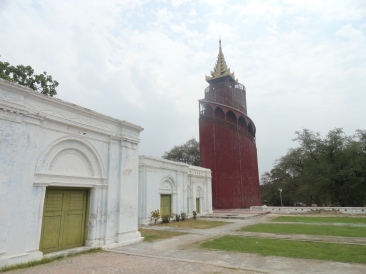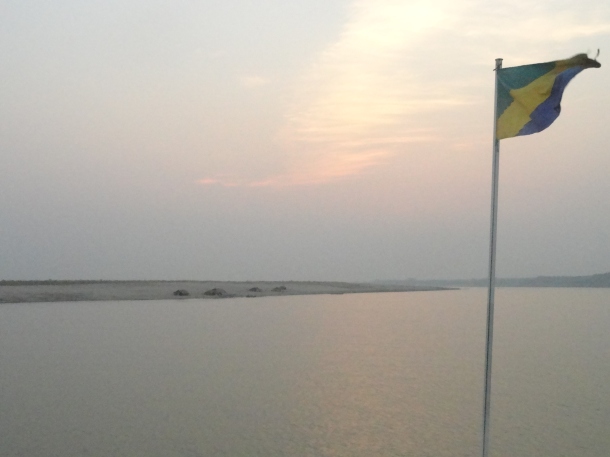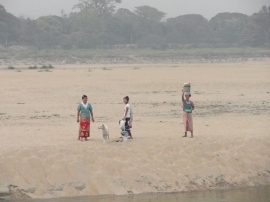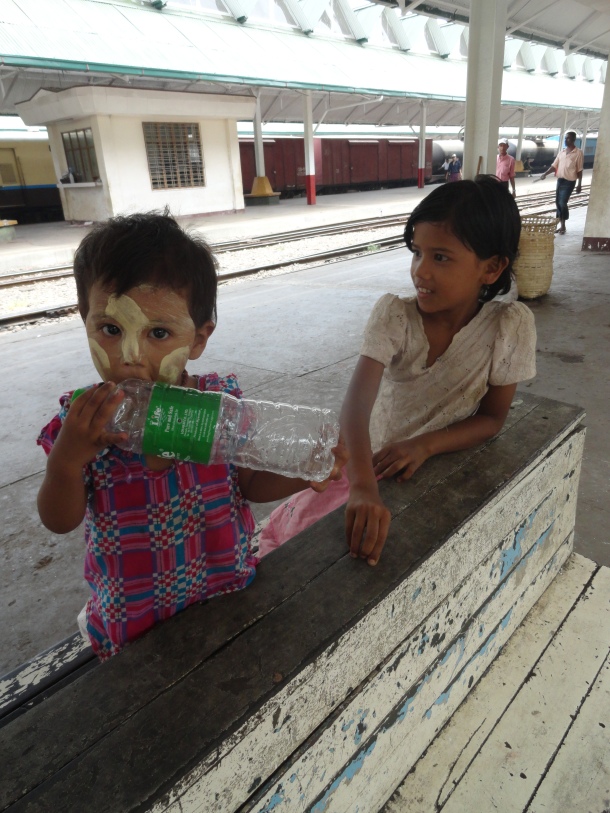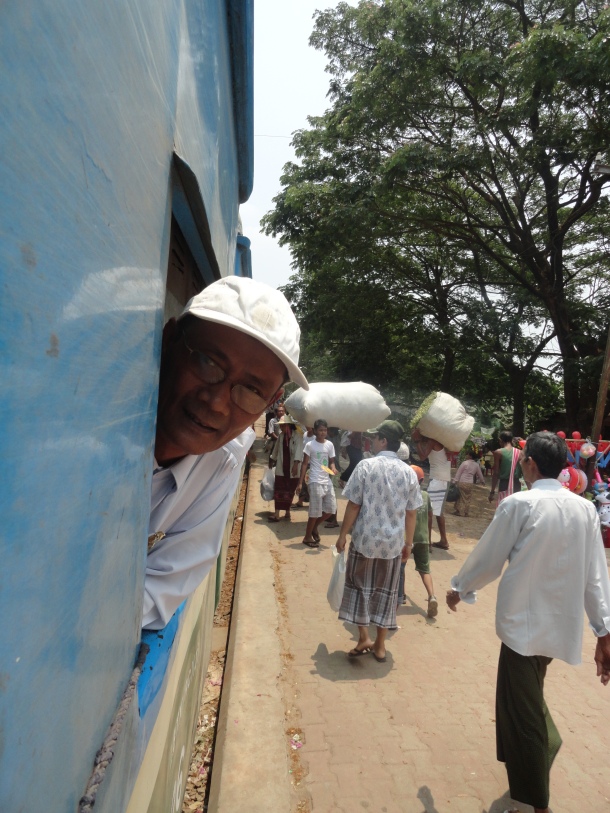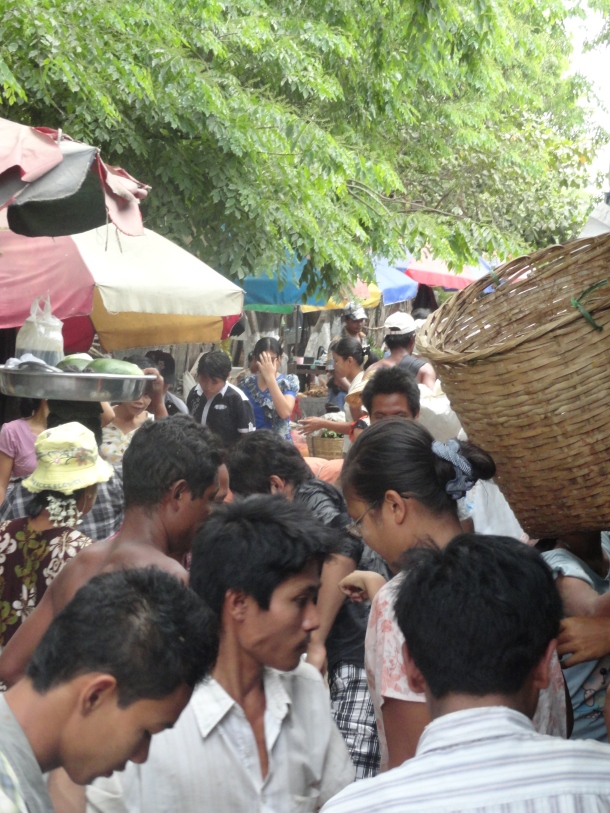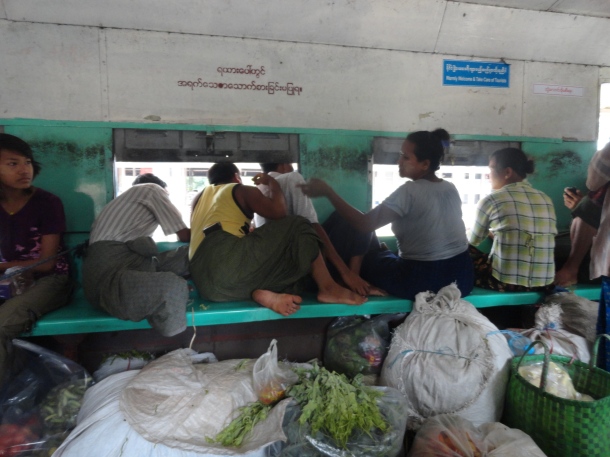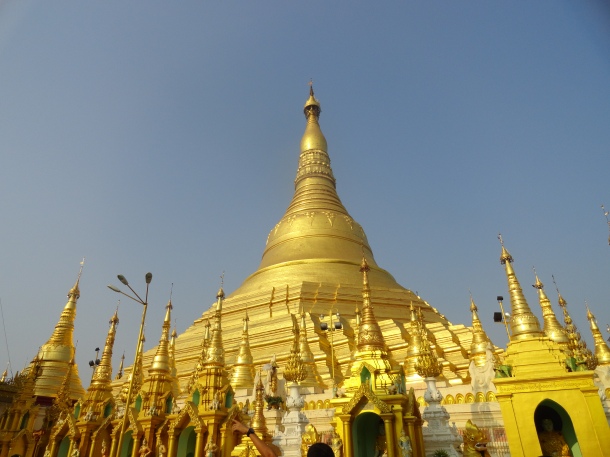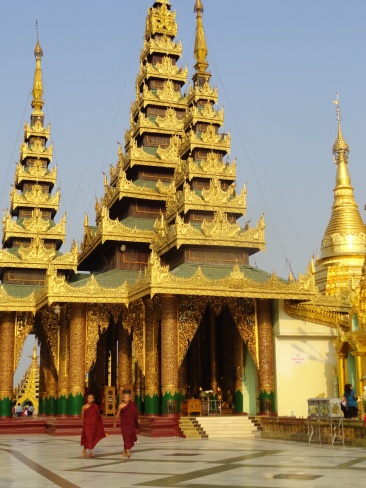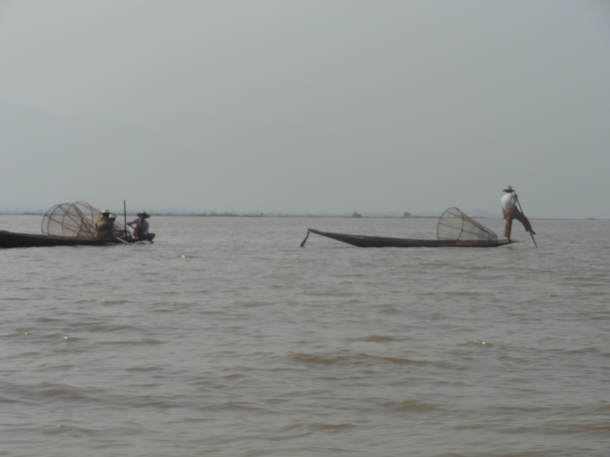
Inle Lake has been made famous by the iconic image of the Intha fisherman who row their boats with an oar wrapped in the crook of their leg so their hands are free to set up their fishing nets. It’s an amazing thing to watch and the sheer balance and coordination that goes into it is simply astounding.
After our early morning arrival in Nyaung Shwe, (the town filled with hotels closest to the mouth of the river) and a nap into the early afternoon we set out to inquire about boat tours and bus tickets back to Yangon. We struck it lucky, finding a very friendly tour operator who offered a boat and a guide for up to four people if we “found more friends” for 16,000 Kyat for the entire day. 8AM to Sunset.
So the next day, with a friend from the hotel in tow, we drove the 4KM from Nyaung Shwe into the lake wrapped in sweaters and scarves, surrounded by wildlife and bird conservation sites. As we entered the actual lake itself our guide explained a little about the life of the fisherman and how many have given up the ways of fishing to collect weeds and seaweed to be used as fertilizer. A full boat can get them 5,000 Kyat, and they can usually do 3 boatfuls a day. Considering the average daily wage for most laborours is 2,000 Kyat, enough to buy a bottle of water, this is quite lucrative.

A seaweed collector in the foreground, a fisherman with a circular net in the background
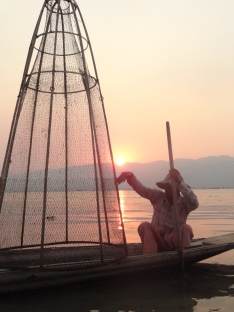
Our posing fisherman with a circular net
For most fishermen, the act of fishing itself is too often uncertain and requires a lot of work for little reward. There are two methods that they use to catch fish, the most common is to drop a net into the water and use an oar to scare the fish into it. The most beautiful and skillful method is to use the round net and wait for a fish to come so they can drop the net over it.
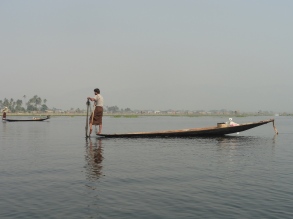
Fishing with a net
Our day around the lake was very full and we were constantly moving from place to place. We started at the Phaung Dow Oo Paya Pagoda market and wandered around snapping photos and smiling at all the locals with their rows of spices, fish, fruit and handicrafts.

Dried fish for sale
Then we headed to a weaving factory where we watched ladies sitting in front of giant looms creating beautiful Longyi, shawls and scarves. Per day these women usually make 3,500 Kyat (if they make one Longyi or shawl). But the atmosphere of the factory was lighthearted and compared to what one assumes factories in third world countries would look like, the fresh air and view of the lake was a definite bonus to the workers.

Making a Longyi (skirt – like clothing worn by men and women)
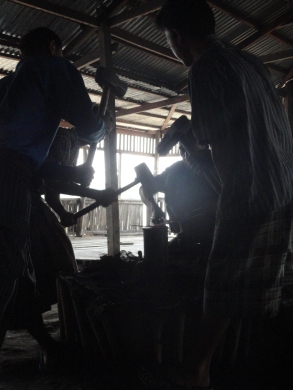 From there we went to a blacksmiths, where we watched 5 men pounding away at heated metal to create knives, swords and tools. The intensity of their pounding echoed across the lake and the accurate pounds of their hammers was enough to scare any tourist from standing too close. It also made one wonder how often they miss and collide with a blow from their colleague.
From there we went to a blacksmiths, where we watched 5 men pounding away at heated metal to create knives, swords and tools. The intensity of their pounding echoed across the lake and the accurate pounds of their hammers was enough to scare any tourist from standing too close. It also made one wonder how often they miss and collide with a blow from their colleague.
After lunch at “Nice Restaurant” we visited a cigar and cigarette rolling display where we learned about the Burmese cigarettes and had a chance to smoke a minty fresh clove cigar.
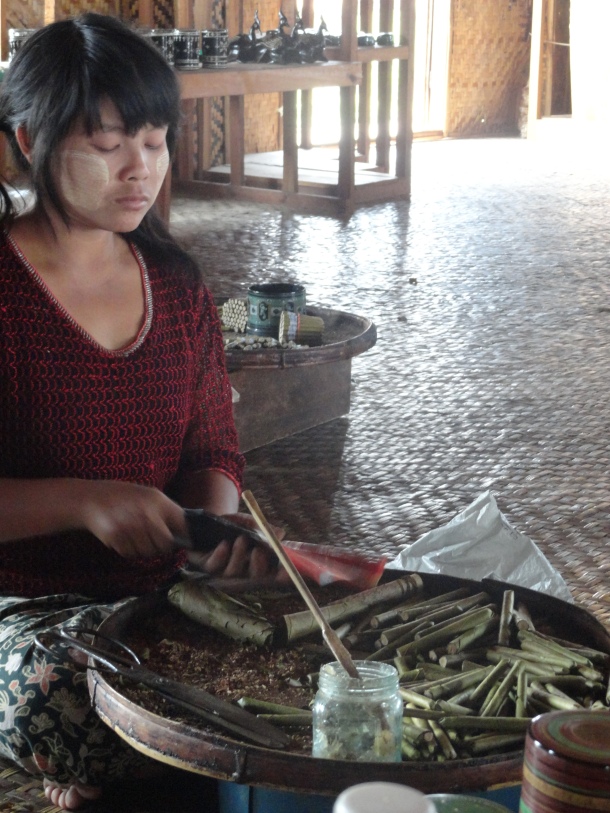
Hand-rolled cigars
We then headed up a small alley-way river where women rode up beside us to try and sell some jewelry as we made our way to visit the Longneck women. This was the biggest tourist trap of the day, and I felt bad for the four women who spend their day posing for pictures, either sitting in chairs or weaving in the shop. These Kayan women are the only four of their kind in Inle Lake, as most reside in the Shan State of Southern Myanmar bordering Thailand. Thailand has three villages of Longneck women, and a visit to Chiang Mai can include the exploitation of a visit to these three villages. I never did it, and don’t know anyone who did, but simply being witness to the women in Inle Lake was sad in its own way. With the brass coils around their necks, they are incredibly beautiful and I can only hope that having their picture taken day in and day out doesn’t make them feel exploited, but beautiful and interesting instead. The coils themselves are worn since the age of five, and only taken off to change to bigger ones as they age. The appearance of a stretched neck is actually caused by crushing the clavicle and compressing the rib cage.

Along the same river we visited a silversmith where we watched them turn blocks of silver into intricate jewelry or elaborately etched bowls.
Then, my favourite part, as we floated through these tiny little roads between rows and rows of floating gardens anchored by bamboo sticks. This is where you see the weeds and seaweed that the fisherman now collect being put to good use, as it’s this mix of mud and much that creates the beds for all the vegetables produced in Inle.
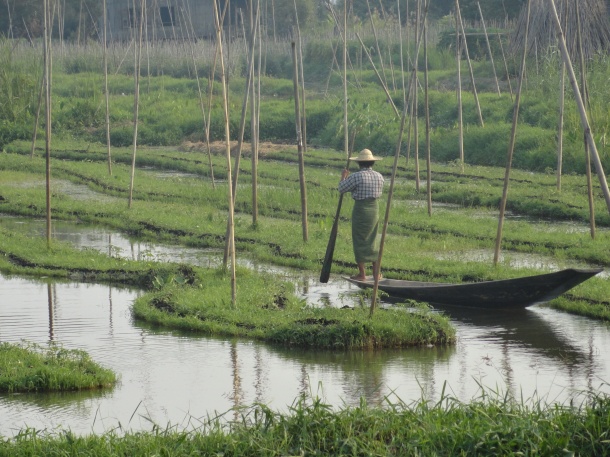
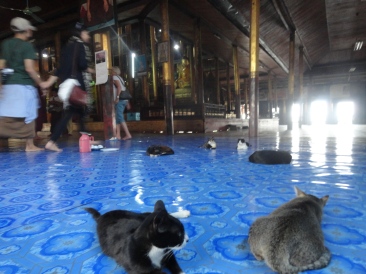 Just near the densest jungle of gardens is the Nga Phe Kyaung monastery, also known as the jumping cat monastery. While monks used to teach the plethora of cats at this monastery to jump through hoops and do circus tricks, there appears to no longer be a show of this. Most of the cats lazily lounge through the day and tourists wander around to see the large number of antique Buddha images collected from around Burma.
Just near the densest jungle of gardens is the Nga Phe Kyaung monastery, also known as the jumping cat monastery. While monks used to teach the plethora of cats at this monastery to jump through hoops and do circus tricks, there appears to no longer be a show of this. Most of the cats lazily lounge through the day and tourists wander around to see the large number of antique Buddha images collected from around Burma.
As the sun was setting we started heading home, slowing to watch the sunset and try to get shots of the leg fisherman. One of which was posing for us in the hopes that we would give him some money for his performance.
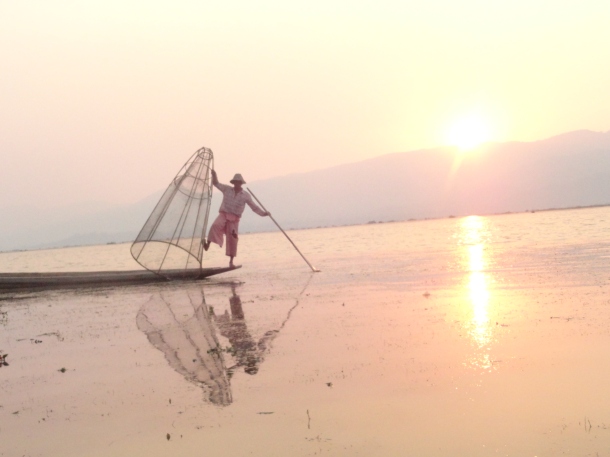
The whole day felt a little fabricated, a show put on for tourists to see how things are done in Inle, but it was beautiful and simply viewing all the gardens and neighbourhoods on stilts would have been enough for me. Thinking about how those people literally live their lives on the water, being unable to even visit friends without the help of a boat or a long plank of wood between houses is completely different to our Western neighbourhoods full of concrete.

















